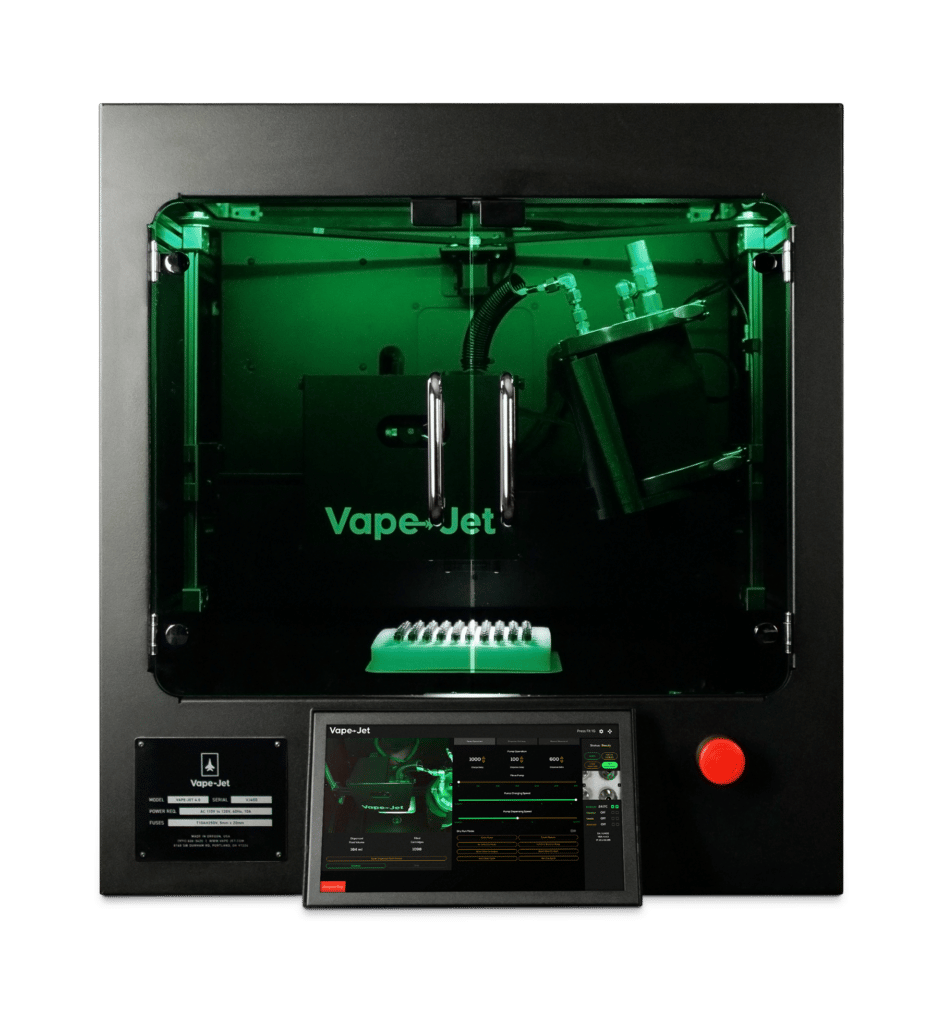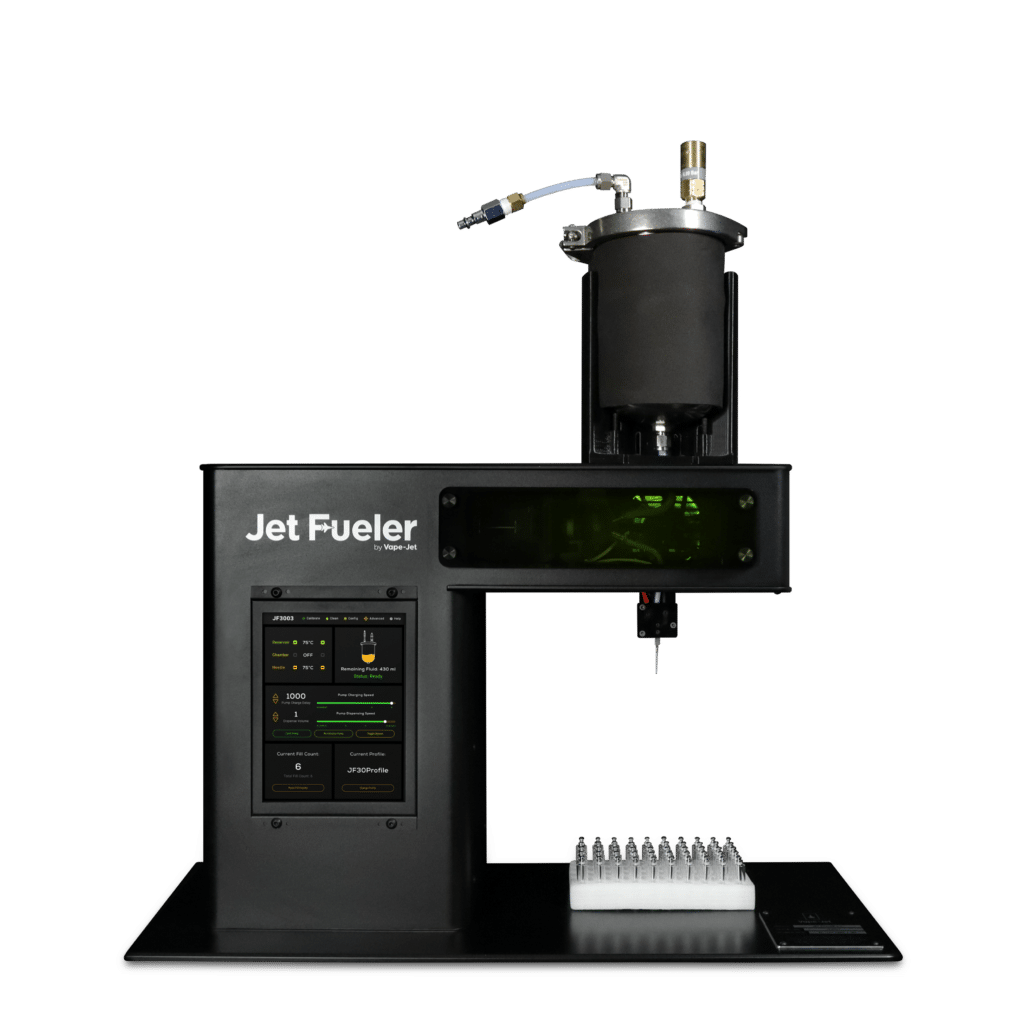This article explains the general process to achieve the maximum possible solvent recovery rate from any rotary evaporator.
Introduction
Rotary evaporation is a powerful technique for quickly removing solvent from a solution of cannabis or hemp extract. There are two distinct methods of operating a rotary evaporator: batch or continuous; choosing the correct one for the task is crucial. For the purposes typically required in the cannabis industry, i.e. winterization or color remediation of extracts, the necessary volume of solvent to be recovered invariably necessitates a continuous style of operation for rotary evaporators. Not only can solvent recovery rates be increased by 2-4x with this mode of operation, but overall throughput is increased as well since vacuum is maintained until the rotary flask (or solvent recovery flask) is ready to be emptied.
Continuous Operation
In order to achieve the highest possible solvent recovery rate, several individual rates of the rotary evaporation process must be tuned to match or complement each other. The defining characteristic of continuous operation is the slow and constant addition of fresh solution into the rotary flask. Only as much solvent as can be evaporated and condensed should be added to the rotary flask per unit of time. In other words, the volume solvent dripping off the condenser should be equal to the volume of solvent containing solution dripping into the rotary flask.
Important Constants:
- Heat – the water bath provides heat to the evaporating surface of the rotary flask. Having enough hot water to cover a large area of the rotary flask is essential.
- Vacuum – the vacuum in the system can be thought of as essentially constant if the pump is of sufficient capacity. Having a large enough vacuum pump is vital.
- Cold – the condenser removes heat from the vapor and forces it to drip into the collection flask. Having a high cooling capacity is the most important factor.
These important constants are listed in order of increasing difficulty and cost to achieve. Heating water is a very easy and low cost part of the system, the vacuum pump is more specialized but relatively simple, while the refrigeration unit is the most complex and costly component. Having insufficient cooling capacity will dramatically decrease the maximum rate of solvent recovery possible from any rotary evaporation system.
The greater the difference in temperature (ΔT) between the hot (evaporation) and cold (condensation) sides of the system, the faster the solvent can be recovered.
Ideally, the refrigeration unit of the rotary evaporator system will be large enough so that ΔT behaves as a constant during operation at maximum recovery; in reality, the refrigeration fluid will become hotter as evaporation and condensation begin, until it settles at its operating temperature. As the proportion of extract in the boiling flask increases and solvent decreases, the rate of evaporation will also decrease, resulting in a lower refrigerant temperature.
Important Rates:
Keeping the constants in mind, there are several factors which must be tuned in order to achieve maximum recovery. The ΔT for each system is unique and largely dependent upon the refrigeration unit, tuning the following rates to keep ΔT from changing is the essence of continuous operation of a rotary evaporator.
- Rotation – the rate at which solution is exposed to warm surface area to evaporate.
- Feed – the rate of addition of fresh solution into the boiling flask, limited by the rate of Evaporation.
- Evaporation – how fast solvent transforms from liquid to gas, determined as a function of Rotation and Feed, in combination with Heat and Vacuum.
- Condensation – how fast solvent transforms from gas to liquid, determined as a function of Cooling and Vacuum.
In order to achieve maximum solvent recovery, the operator must tune Rotation and Feed rates such that Evaporation and Condensation rates become equal with the highest possible ΔT.
Example
- Attach a length of food-grade tubing to both sides of the Feed Valve.
- The rotary flask side of tubing should extend beyond the neck and slightly down the bulb, this reduces splash.
- The external side of tubing should be long enough to reach the bottom of the beaker or flask that contains your solution of extract and solvent (i.e. ethanol).
- Let your solution come to room temperature prior to solvent recovery, if possible.
- Heat the water bath to at least 60C.
- Ensure there is enough water to come up almost to the level of the rotary flask neck, covering 30-40% of the flask when fully lowered.
- Turn on the refrigeration unit to its lowest possible setting, below 0C is ideal.
- Turn on the vacuum pump.
- Set flask rotation to about 100 revolutions per minute (RPM).
- Once the refrigerator and vacuum are as low as they can be, flask rotating, and with the external tubing in your solution containing beaker, slowly open the Feed Valve.
- Adjust feed valve to a very fine trickle, such that a band of extract forms immediately on the inner surface of the rotating flask.
- If a puddle forms or grows within the first few minutes, close the Feed Valve slightly.
- A puddle of extract rich solution will begin to form after several minutes, adjust RPM as needed to keep the puddle at the bottom of the flask.
- If the puddle is too rich in extract, the Feed Rate can be increased; if the puddle is too rich in solvent, decrease the Feed Rate.
- Monitor the refrigerator temperature throughout and adjust the Feed Valve accordingly, i.e. reduce Feed if temperature increases.
- Once the rotary flask approaches 30-50% full of extract rich solution, the Recovery Rate will decrease.
- Close Feed Valve to reduce chance of boil over, and continue rotary evaporation on the solution in the rotary flask until the desired level of completion.
- Remove and collect the extract from the rotary flask as normal with heat, gravity, and silicone scrapers.












